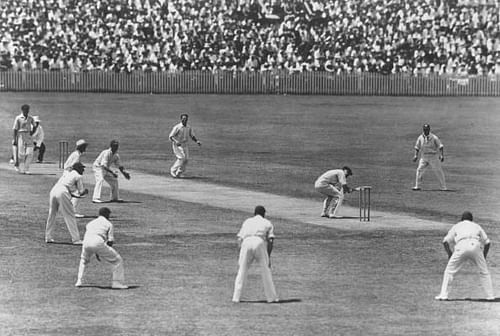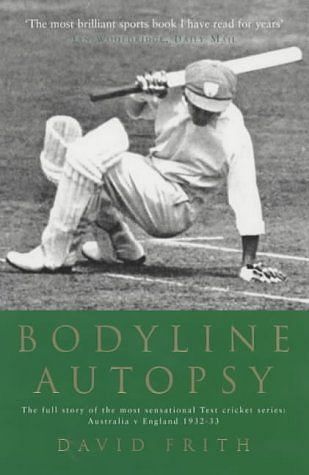
Bodyline Autopsy Book Review: Definitive account of the infamous Bodyline Series

“It’s just not cricket!” – With the IPL auction around, this familiar lament against the shortest format of the game is not too hard to hear. But similar cries, only much louder, were raised during a cricket series, a whole 85 years ago, played in a format the purists swear by. Yes, I am talking about the Bodyline series, which I came to know about in great depth from the most definitive book on it – Bodyline Autopsy.
The author David Frith is introduced as a historian, archivist and interviewer in the first pages of this book and by the time you turn over the last pages you are certain that only a person with such a high caliber would have been capable of undergoing such a meticulous research and presenting it in the most lucid manner. The preface mentions a quote that says, “historians, who have access to all the records know much more about the battle than the participants.” As we dig deeper into the book, Frith convinces us of the verity of that claim.
Also Read: The Ashes - Reliving the infamous Bodyline saga
It is apparent from the first few pages itself that the research is exhaustive, but you begin to fear if the book would drown due to information overload. But the author soon regales you with his narration, much like a bed-time tale told by an old-and-wise grandfather with vast reserves of memory about an exciting event in history.
The ambition here is to give a rather thorough account of not only what transpired during those tumultuous few months Down Under, but why matters came to such pass and also the lasting impact those Test matches left not only on the participants in the ‘battle’, but the game as a whole and, quite shockingly, the bilateral relations between the two nations involved. With all of the warriors of that 1932-33 battle having breathed their last, Frith performs the most incisive autopsy of the Bodyline series before it is buried forever.
England's cunning plan to cripple Bradman

Like a classic tale, the author first introduces the characters and the setting of his ‘story’. Bodyline, the term, we come to know was deplored by its main architect – the English captain Douglas Jardine. He and most of the English press, preferred to call it by the innocuous sounding ‘Leg Theory’, which was a strategy in which bowlers packed the leg side with fielders and bowled at the leg of the batsmen who sooner or later lobbed one to the ‘leg trap’.
But Bodyline was Leg Theory 2.0, devised with sole aim of countering the threat of a certain Donald George Bradman who possessed such swift hands and feet that he could punish even the best of deliveries, even those swinging into his thighs. He had given ample display of how he could decimate the English bowling during the previous Ashes in 1930 by scoring 974 runs in the series, which remains a record yet to be surpassed.
It was then that the English captain Jardine, after consulting his seniors, came up with the ‘unsportsmanlike’ strategy which came to be known as Bodyline as he made his fast bowlers bowl at the body of the Australian batsmen with a ‘leg trap’ in place.
It is important to realise here that helmets became common only by the 1980s. So, it was indeed signs of desperation on the part of the English as Bodyline carried with it the threat of a serious injury, especially those balls bowled by Harold Larwood who is still considered one of the fastest bowlers of all time.
After we are made familiar with the main characters and setting of the book, Frith describes the Test matches that followed in the most gripping manner. Bradman’s first ball duck in the first innings of the second test, but a fighting century in the next innings, despite Bodyline bowling, to help Australia win the match and level the series; the controversy reaching its peak in the third Test at Adelaide after Australian captain Woodfull was left gasping for breath by a Larwood delivery which hit him on his chest; the controversial cables that were exchanged between the cricket boards of the two countries; the vocal displeasure of the Australian spectators on the tactics adopted by captain Jardine; and how all this went on to affect the trade and diplomatic relations between the two countries and cricket as a whole. Frith fascinatingly describes everything in great detail without painting anything in purely black and white, making the book much more insightful than merely a ‘tour diary’.
The lovely anecdotes and quotes, drawn from the extensive research of the author, don’t only bring context to the subject, but also go a long way in making the book very readable. And the book is just full of them. I started with a new pencil to underline the best parts of the book and by the time I was done with it, the pencil had become so tiny from use that it hardly fit in my fingers.
The pictures might be few, but they help to give a face to the characters and bringing alive that period. The interviews with the relatives of the actual participants and quotes from letters by cricketers dug up from author’s own extensive cricket library add valuable insight to the proceedings of the Bodyline series. In the last pages, the book also manages to give Larwood and the much vilified Jardine a bit of a redemption.
David Firth’s labour of love is a treasure trove of cricket history told in the most engaging manner. It would take a gigantic effort to come up with a better book on the subject. Bodyline Autopsy is without doubt the ultimate tome on the most controversial passage of play the game of cricket has ever seen.